Pressure Sore Risk in Nursing Homes
Pressure Sore Risk in Nursing Homes
Pressure sores, also referred to as pressure ulcers or bedsores, manifest as injuries to the skin and underlying tissues due to prolonged pressure on specific areas of the body. Pressure ulcers, also known as bedsores, are unfortunately common in nursing homes. According to a report from the Centers for Disease Control and Prevention (CDC), more than 1 in 10 nursing home residents had pressure ulcers, with stage 2 ulcers being the most common, accounting for about 50% of all pressure ulcers. The reason pressure sores are so common in nursing homes is primarily due to a lack of proper nursing care to prevent them. Keep in mind, pressure sores can be life-threatening.
Pressure Sore Risk Factors
The development of pressure sores is influenced by various risk factors, and individuals often exhibit a combination of these factors, escalating the likelihood of pressure sore formation. Here’s a detailed exploration of each risk factor:
Immobility:
Immobility is a primary risk factor for pressure sores. Individuals with limited mobility, such as those who are bedridden or confined to a wheelchair, are unable to regularly shift positions. These patients depend upon nursing staff to ensure they are repositioned in a timely manner. Prolonged pressure on certain body parts reduces blood flow, leading to tissue damage and the formation of pressure sores.
Incontinence:
Prolonged exposure to moisture from urine or feces softens the skin, making it more susceptible to damage. Incontinence-related skin issues can exacerbate the risk of pressure sores.
Malnutrition:
Proper nutrition is vital for maintaining healthy skin. Malnutrition, characterized by a lack of essential nutrients, weakens the skin’s ability to resist damage and impairs the body’s capacity to repair and regenerate skin tissues.
Dehydration:
Inadequate fluid intake can contribute to dry skin, diminishing its elasticity and making it more prone to damage. Dehydrated skin is less resilient, increasing the risk of pressure sore development.
Decreased Sensation:
Conditions such as spinal cord injuries or neurological disorders may result in decreased sensation. Individuals with compromised sensory perception may not be aware of discomfort or pressure, leading to prolonged immobility in specific areas and an increased risk of pressure sores.
Advanced Age:
Aging is associated with changes in skin structure and reduced skin elasticity. Older adults may have thinner, more fragile skin, which increases susceptibility to pressure sores.
Friction and Shear:
Friction occurs when the skin rubs against surfaces, while shear forces result from skin movement in relation to underlying tissues. Both friction and shear stress can damage the skin and contribute to the development of pressure sores, especially in individuals who may be repositioned or moved frequently.
Medical Conditions:
Chronic illnesses, spinal cord injuries, and other medical conditions can contribute to immobility, compromised circulation, or decreased sensation, collectively heightening the risk of pressure sore development.
Underlying Skeletal Abnormalities:
Structural issues such as scoliosis or joint deformities may create localized pressure points on the skin, increasing vulnerability to pressure sores.
Poor Overall Health:
Individuals with weakened immune systems or chronic health conditions may experience impaired healing and increased susceptibility to infections, complicating the severity and management of pressure sores.
Medications:
Certain medications can impact skin integrity, moisture levels, or the healing process, potentially elevating the risk of pressure sore formation.
Pressure Sores Are Almost Always Preventable with Proper Care
It’s crucial to emphasize that the mere presence of risk factors does not inevitably lead to pressure sore development. The key lies in a proactive, collaborative approach to prevention. Engage healthcare providers, caregivers, and individuals at risk in ongoing communication and education. Establish and consistently implement a comprehensive care plan that includes regular repositioning, specialized support surfaces, proper nutrition, hydration management, skincare routines, and ongoing health monitoring. This multifaceted strategy is pivotal in maintaining skin integrity and overall well-being, significantly reducing the risk of pressure sore formation.
What to Do If You or a Loved One Develops a Pressure Sore
First, you should ask questions to find out more about why the pressure sore developed and what is being done about it. Questions you can ask include the following:
- Has the pressure sore been evaluated by a wound care expert?
- What is the current state and severity of the pressure sore?
- What caused the pressure sore to develop?
- How often is repositioning occurring?
- What measures are being taken to avoid pressure on the affected area?
- Is there evidence that the area is infected, and if so, what is being done to address the infection?
- Should there be any diet modification to help promote wound healing?
- How frequently should the wound dressings be changed?
- What is the timeline expectation for having the wound healed?
You Should Report Any Suspected or Possible Patient Neglect
Reporting any suspected patient neglect that results in a pressure sore is essential for several compelling reasons. Timely reporting of neglect in pressure sore development ensures that affected individuals receive prompt attention, appropriate medical intervention, and necessary preventive measures to mitigate further harm. Beyond individual cases, reporting contributes to the broader improvement of healthcare quality by prompting investigations into potential systemic issues, staffing concerns, or deficiencies in care protocols. This information aids in implementing corrective measures, enhancing caregiver training, and fostering a culture of accountability within healthcare facilities. Ultimately, reporting suspected neglect leading to pressure sores is a crucial step toward maintaining the dignity, well-being, and safety of patients, and it reinforces the commitment to upholding ethical standards in healthcare. Learn more about how you can report nursing home neglect or abuse in Indiana.
Frequently Asked Questions (FAQs):
1. What are pressure sores, and why are they common in nursing homes?
Pressure sores, also known as pressure ulcers or bedsores, result from prolonged pressure on specific body areas. Unfortunately, they are prevalent in nursing homes due to various factors, primarily a lack of proper nursing care to prevent them.
2. What are the risk factors for developing pressure sores?
Several risk factors contribute to the development of pressure sores, including immobility, poor circulation, decreased sensation, malnutrition, dehydration, advanced age, friction and shear, smoking, incontinence, underlying medical conditions, skeletal abnormalities, poor overall health, and certain medications.
3. How can pressure sores be prevented?
Prevention of pressure sores involves a comprehensive, proactive approach. This includes regular repositioning, specialized support surfaces, proper nutrition, hydration management, skincare routines, and ongoing health monitoring.
4. What should I do if I or a loved one develops a pressure sore in a nursing home?
If a pressure sore develops, it is essential to ask pertinent questions to understand the severity, causes, and preventive measures being taken. Inquire about evaluations by wound care experts, the current state of the sore, causes, frequency of repositioning, infection status, diet modifications, dressing changes, and the expected healing timeline. Additionally, reporting any suspected patient neglect leading to pressure sores is crucial for prompt attention, appropriate intervention, and contributing to overall improvements in healthcare quality.
 Jeff Powless is an attorney and the author of the 2017 book, Abuses and Excuses: How To Hold Bad Nursing Homes Accountable. Abuses and Excuses breaks new ground in helping patients and families hold bad nursing homes accountable, sharing a wealth of insider strategies and insights. It’s an eye-opening account of corporate greed, acts of neglect and abuse, an insidious industry culture of cover-up, and the actual harm that inevitably befalls vulnerable nursing home patients all across the country with shocking frequency.
Jeff Powless is an attorney and the author of the 2017 book, Abuses and Excuses: How To Hold Bad Nursing Homes Accountable. Abuses and Excuses breaks new ground in helping patients and families hold bad nursing homes accountable, sharing a wealth of insider strategies and insights. It’s an eye-opening account of corporate greed, acts of neglect and abuse, an insidious industry culture of cover-up, and the actual harm that inevitably befalls vulnerable nursing home patients all across the country with shocking frequency.
